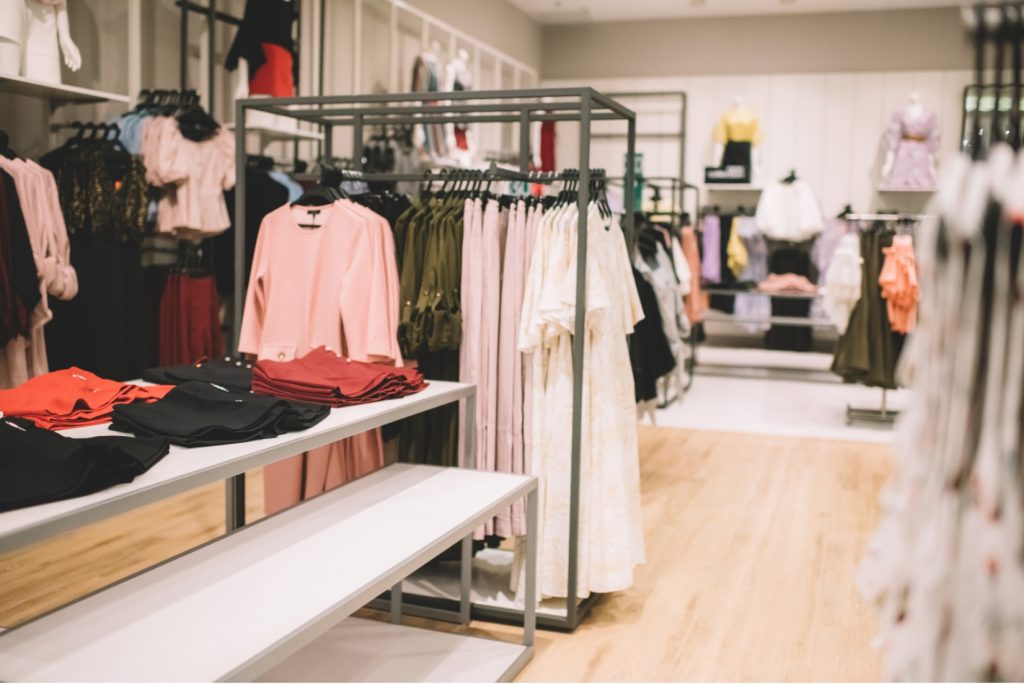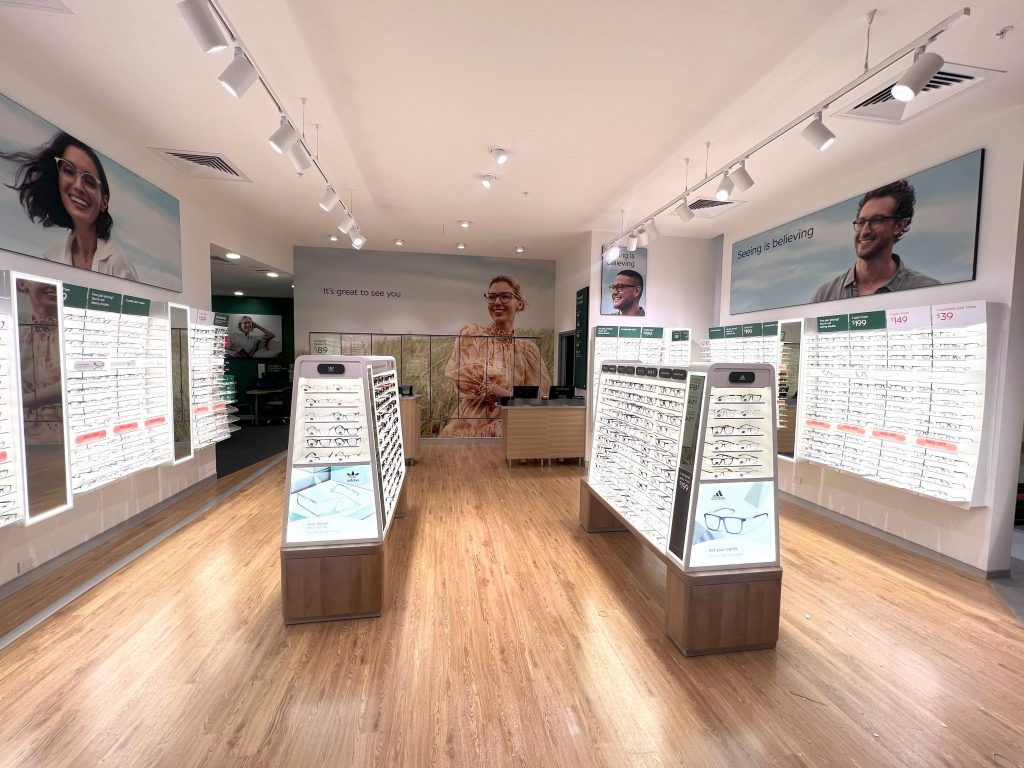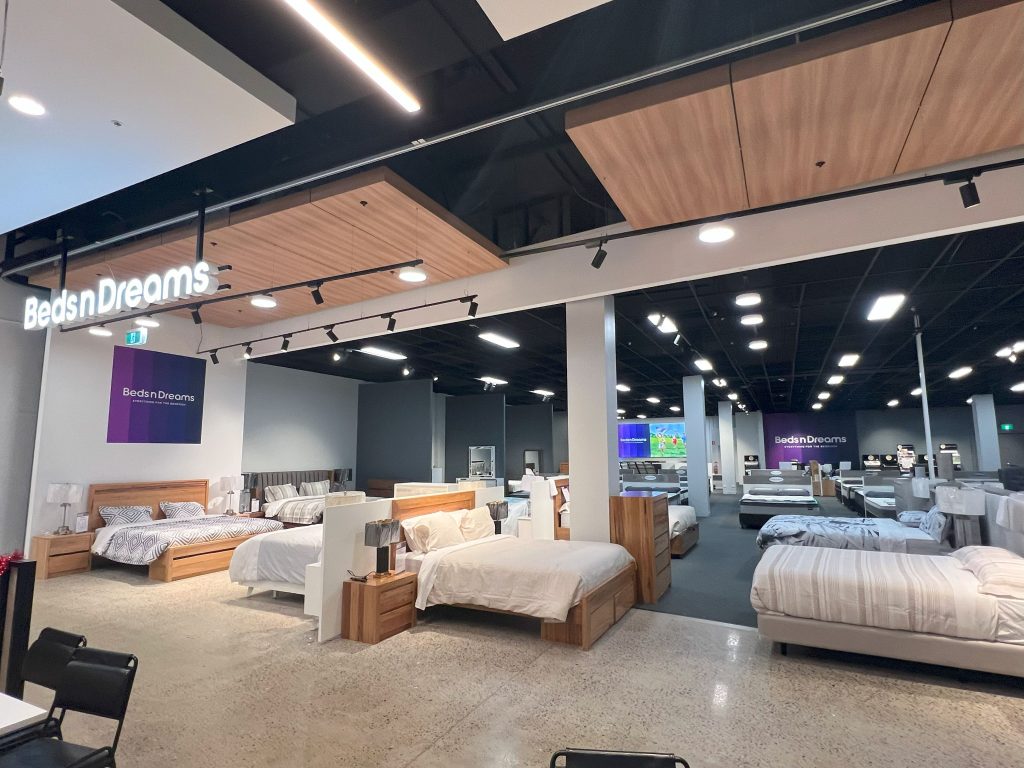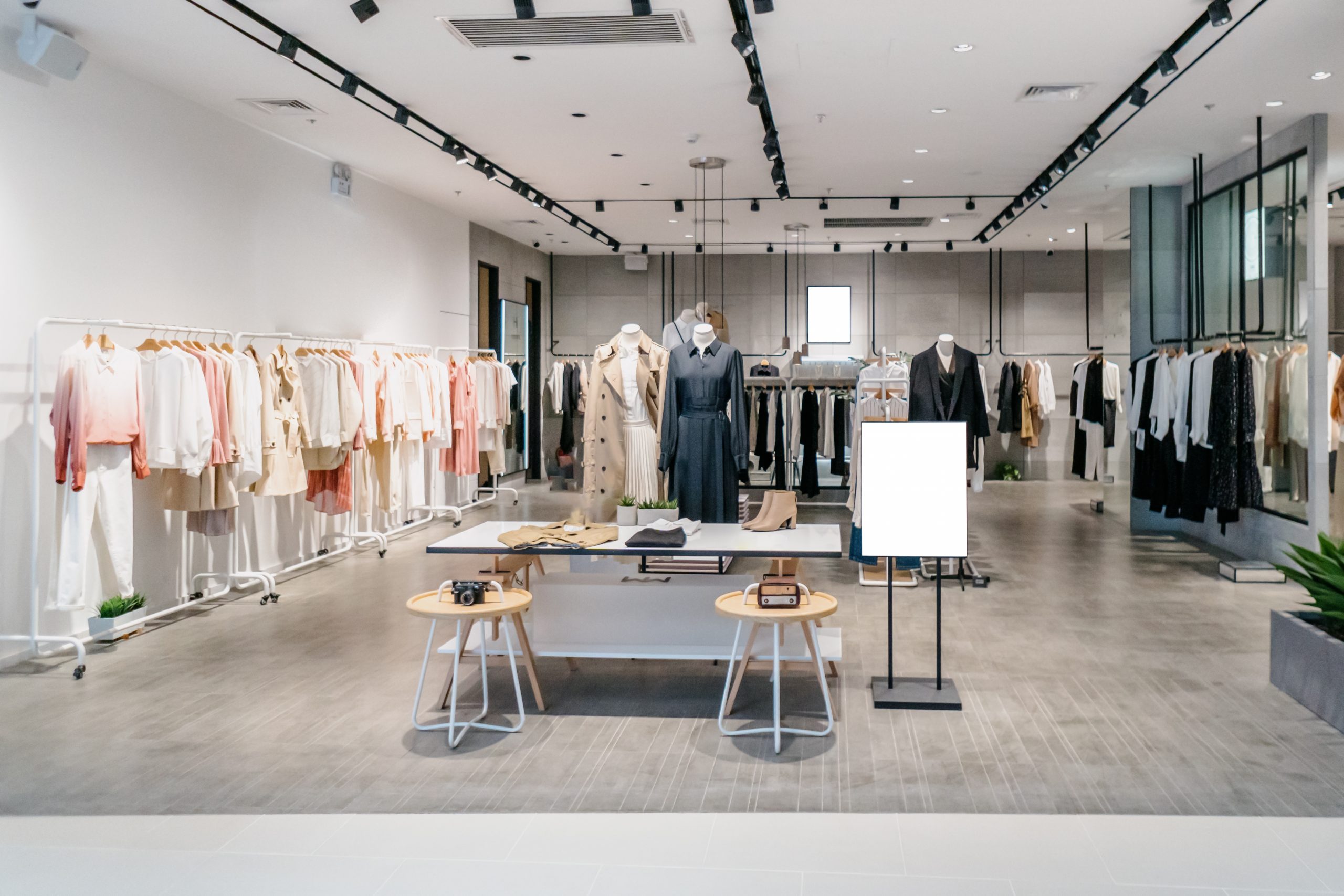As one of Sydney’s leading commercial fit-out companies, CMLS Commercial Interiors is committed to being on top of the latest trends from around the world when it comes to retail design.
Going Shopping is an Experience – and there’s a reason we call it “retail therapy”!
In-store shopping remains as popular overall as online shopping. With the prevalence of online shopping, however, and the ease it offers consumers, retailers must work harder to attract customers to their brick-and-mortar stores. As such, brands need to rethink their approach to the tangible shopping experience they offer customers, and this includes their approach to the design of their physical retail spaces.
When customers have a positive shopping experience, they are more likely to convert, remain loyal, and even generate new leads on behalf of the brand. Stores play both transactional and experiential roles – and modern brands must understand this and balance these. They must unlock and facilitate consumer engagement throughout the entire shopping journey – and provide real benefits to attract shoppers to visit their stores in person.
Contemporary Retail Design
The current prevailing trend in store layout is focused on accessibility. It enables streamlined, simple navigation from the moment the customer enters the store, guiding and enriching the shopping experience from product discovery to purchase completion.
Modern retailers need to consider store design and layout as well as marketing and branding and understand their customers and how they transition into and throughout the store on their purchase journey.

7 Current Trends in Retail Design
- Adaptive Layouts – with the widespread industry requirement to refresh store spaces regularly, incorporating an adaptive layout is a great idea. This versatile, responsive, and flexible approach enables retailers to easily change their store displays, floorplans, and more – making them ideal for new product launches, seasonal displays, branded promotions, pop-ups, events, and more. This works to better engage consumers. Everything from moveable walls/partitions to reconfigurable modular elements allows retailers to create a dynamic space that is optimised for branding and engagement.
- Sleek Technological Signage – digital signage is the way of the future – and it is here now. Digital signs offer an enhanced customer experience – they are dynamic and appealing, and adapt in real time to increase brand exposure and engagement.
- Texture & Pattern – these add depth and visual interest to a space and convey the brand aesthetic. For example, smooth surfaces like steel, polished concrete, or marble suit a sleek, futuristic aesthetic; weathered wood is rustic; velvet, dark wood, and overstuffed sofas are warm and welcoming. Patterns can be anything from dynamic and vibrant to calm and relaxing. Florals are fresh and feminine. Soft pastels are soothing. A simple stripe can evoke a classic or even beachy mood, while tartan or tweed suggests luxury and tradition.
- Sustainability – is more important than ever. More people are appreciating the importance of preserving our planet and protecting our environment, and sustainable design appeals to environmentally conscious consumers. It includes using recycled/recyclable materials, repurposed furnishings, sustainable building practices, energy-efficient lighting, waste reduction, and promoting a circular economy.
- Biophilic Design – nature and well-being are closely linked, and this approach to design means bringing the outdoors in for a more welcoming, calming in-store experience. This includes the use of environmentally inspired colours, patterns, and textures. Think natural woodgrain (flooring, joinery), stone and concrete, limewash, natural fabrics, greenery (either live plants or artificial), water features, etc.
- Minimalistic Displays – less is often more, especially within the luxury products market. Simplicity is modern, elegant, and sophisticated and it resonates with today’s consumers. Think clean lines, no clutter, and plenty of free space.
- Hybrid shopping – while many of us still value the tangible shopping experience, a majority of consumers now review products online before going into a physical store to make their final purchase decision. You need to marry your online experience with your in-store experience and vice-versa – ensuring quality and cohesive branding across both. This includes your colour scheme, logo use, and overall aesthetic.


Is it Time to Re-Fit Your Store?
Refurbishing your store can pay big dividends for your business. Just as a website can become stale after several years, so too will your physical store. A redesign, either with just smaller elements altered, or a full de-fit and re-fit, will freshen your space, excite your customers, and generate interest from consumers in general. It is also a fabulous approach if you decide it’s time to rebrand. Refurbishment can also have dramatically positive effects on staff morale and satisfaction.
This may include elements such as:
- New flooring
- Improved lighting
- New joinery
- Layout redesign
- Repainting
- New signage
- Updated interior design/décor
It’s also important to note that if you lease a store space in a shopping centre, centre management usually requires that you refit/renovate/update after a prescribed number of years (often 5-7).
Our Sydney shopfitter can help. Contact CMLS Commercial Interiors
CMLS Commercial Interiors is a highly experienced, reputed Sydney fit-out company serving the entire city including Parramatta and Penrith. We have the creative insight and talent to bring your refurbishment to life to delight you, your customers, and your staff. Contact us today.

